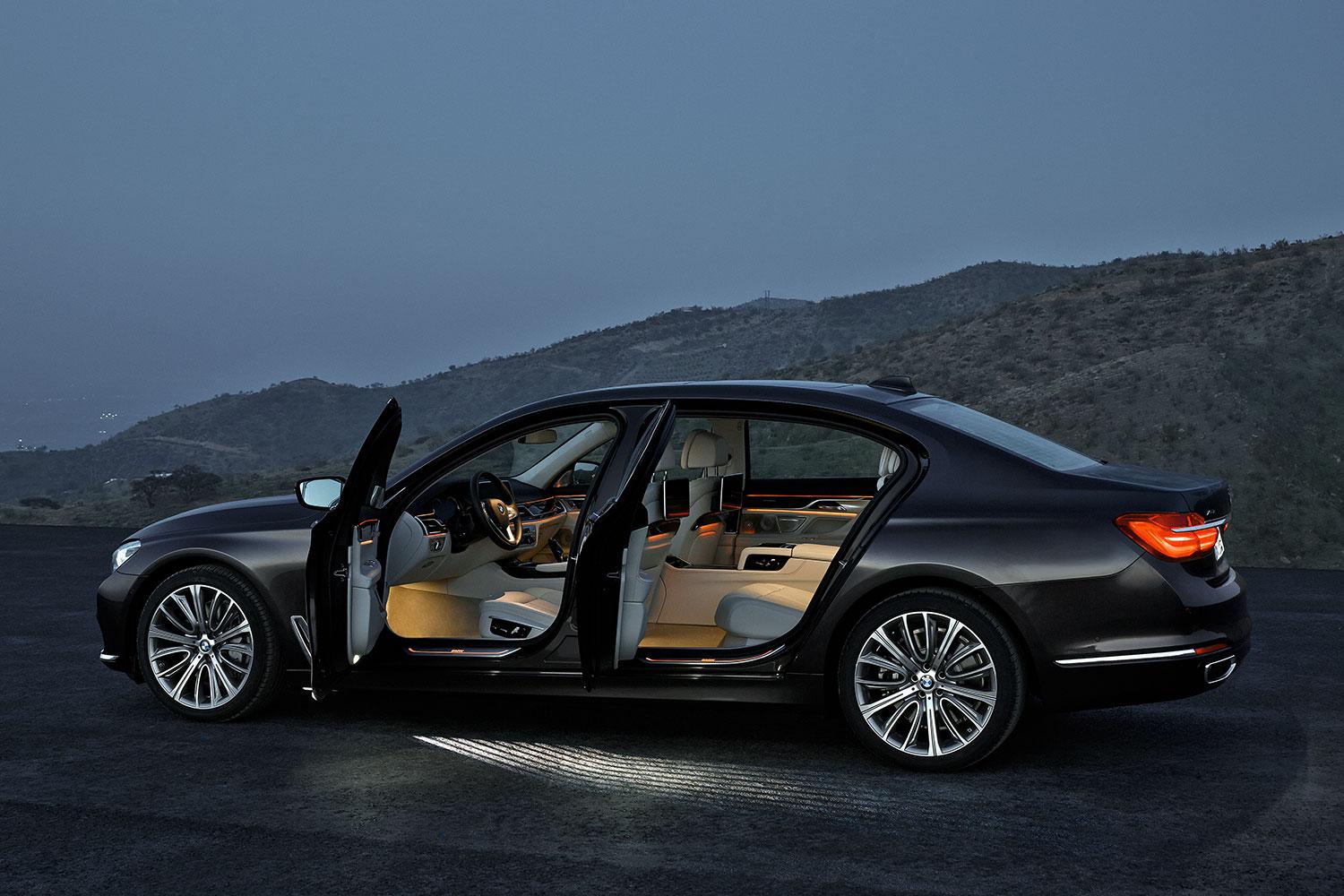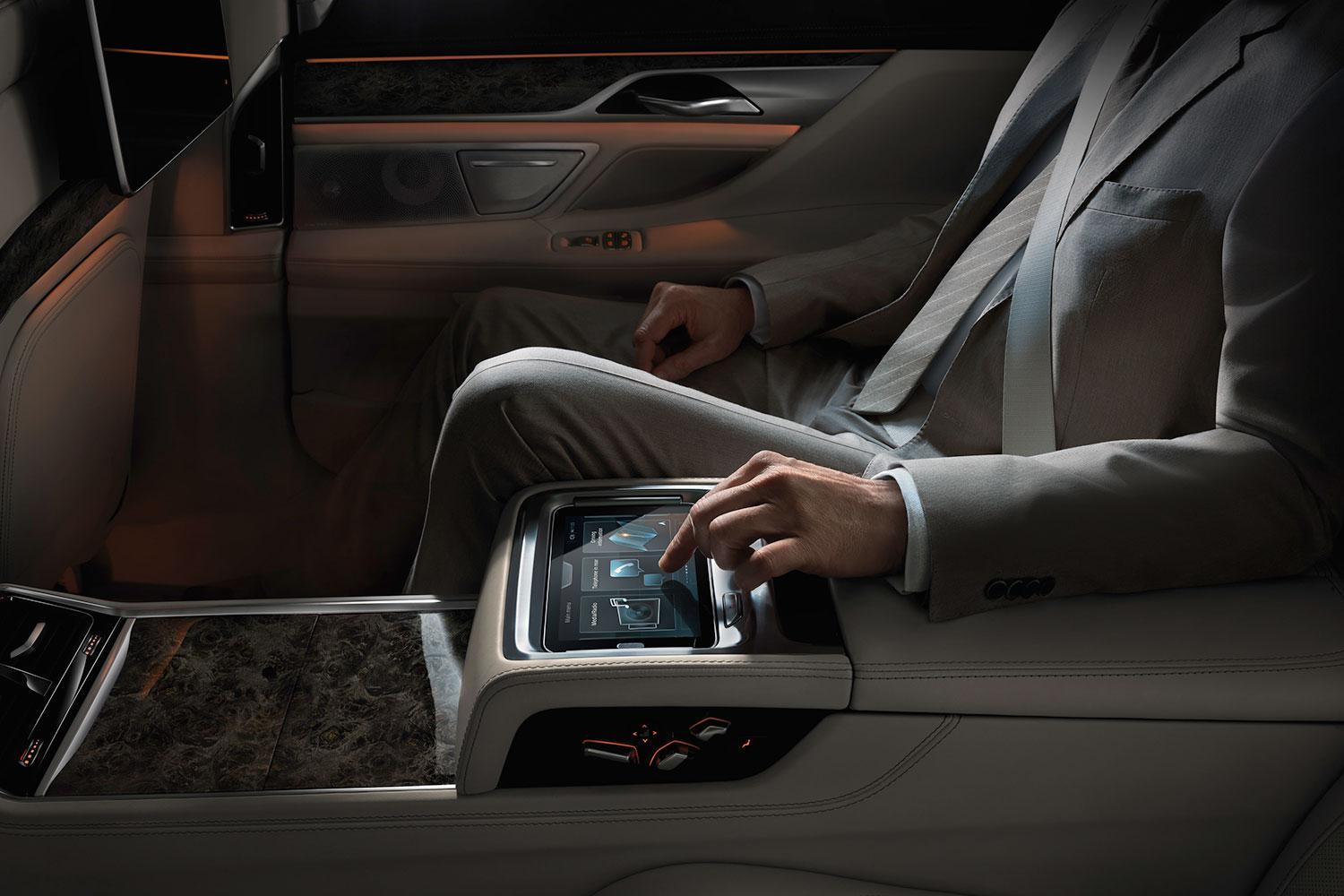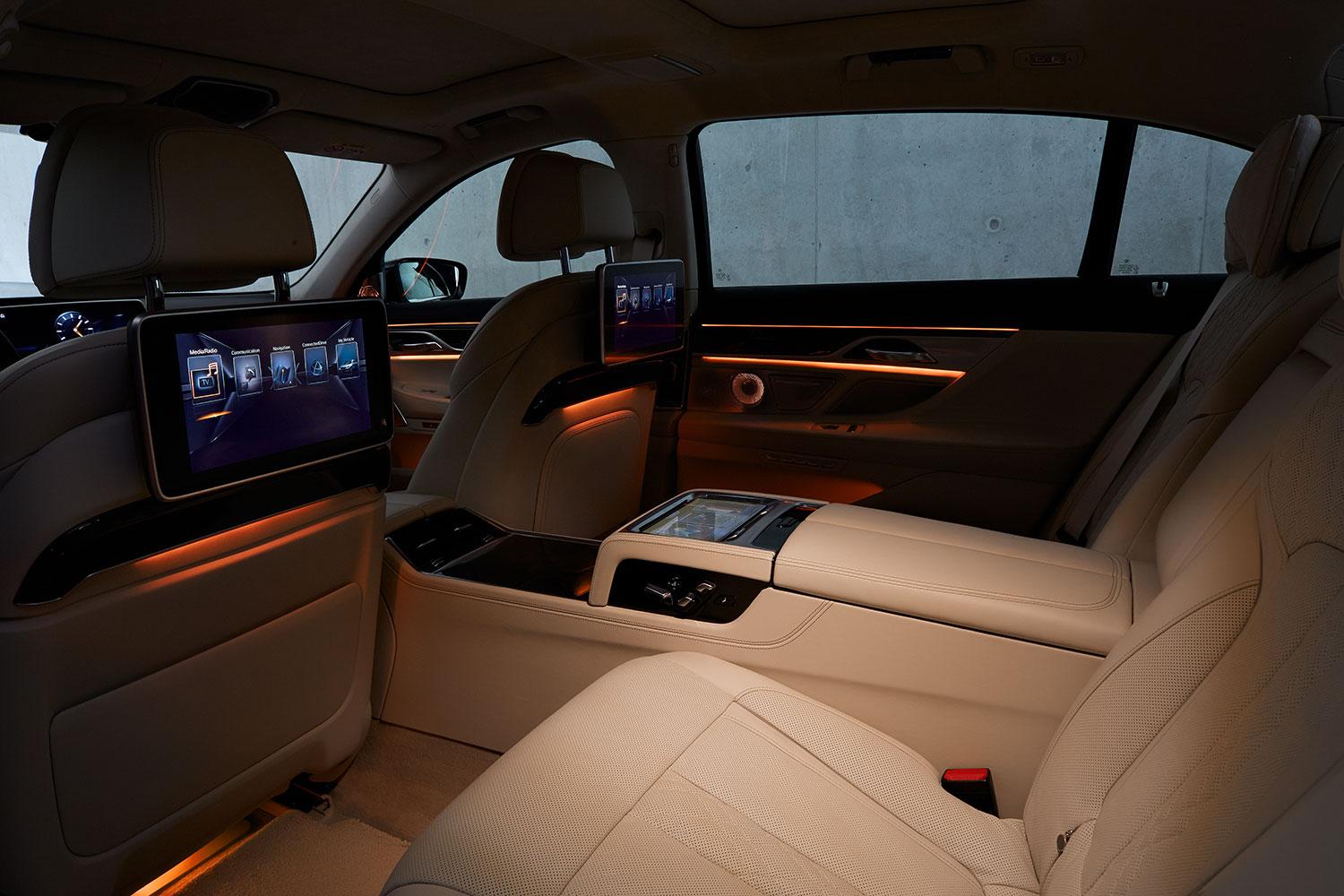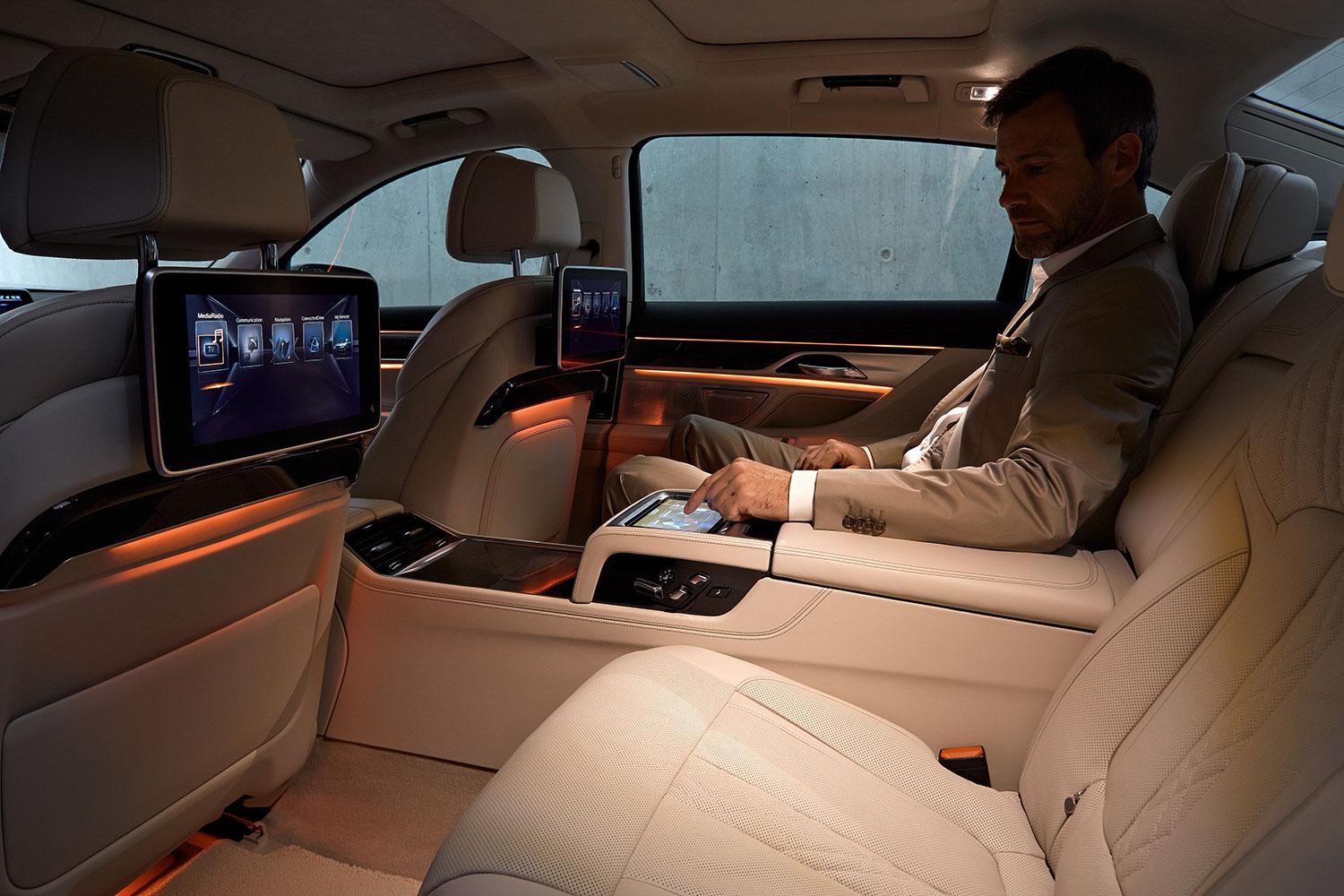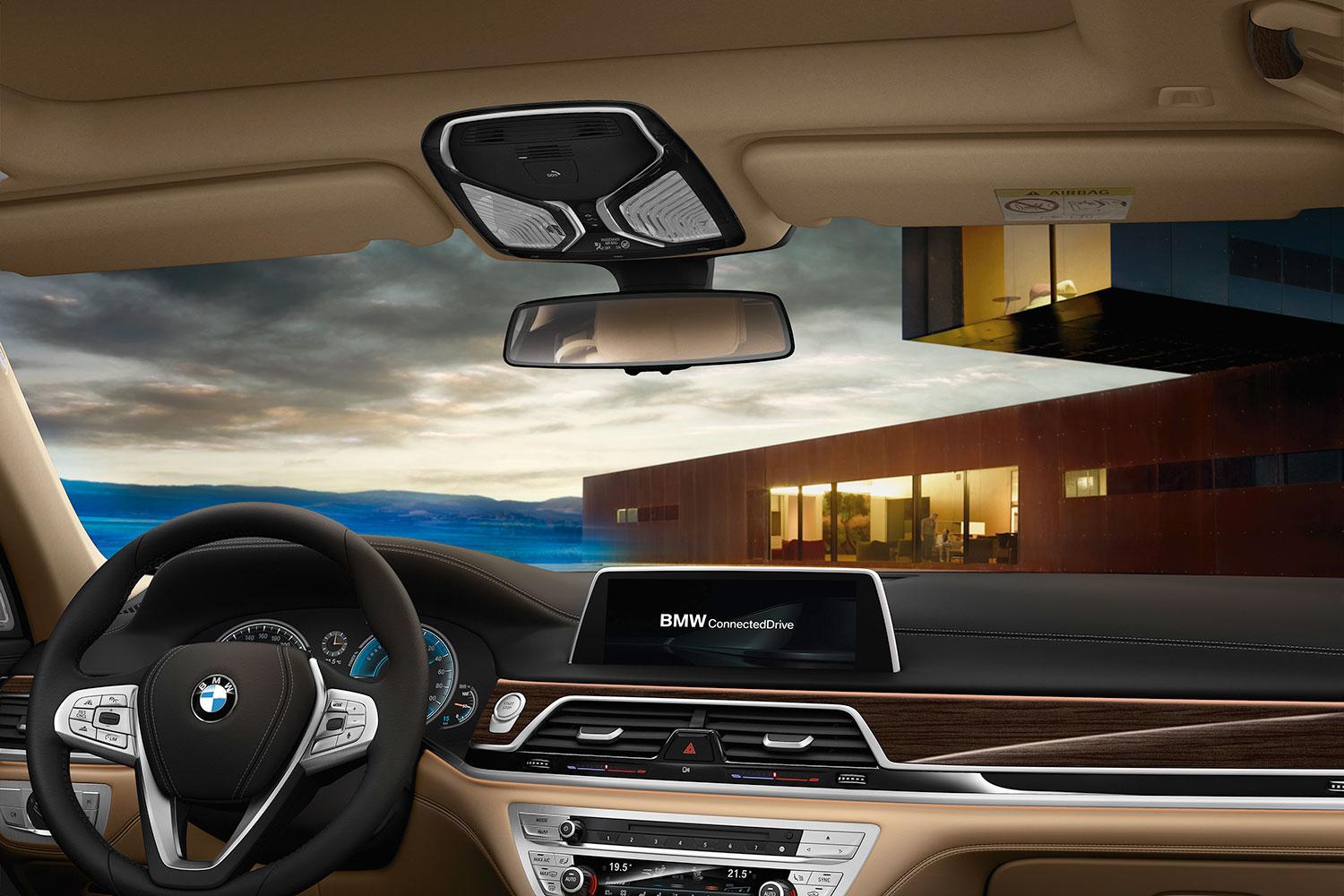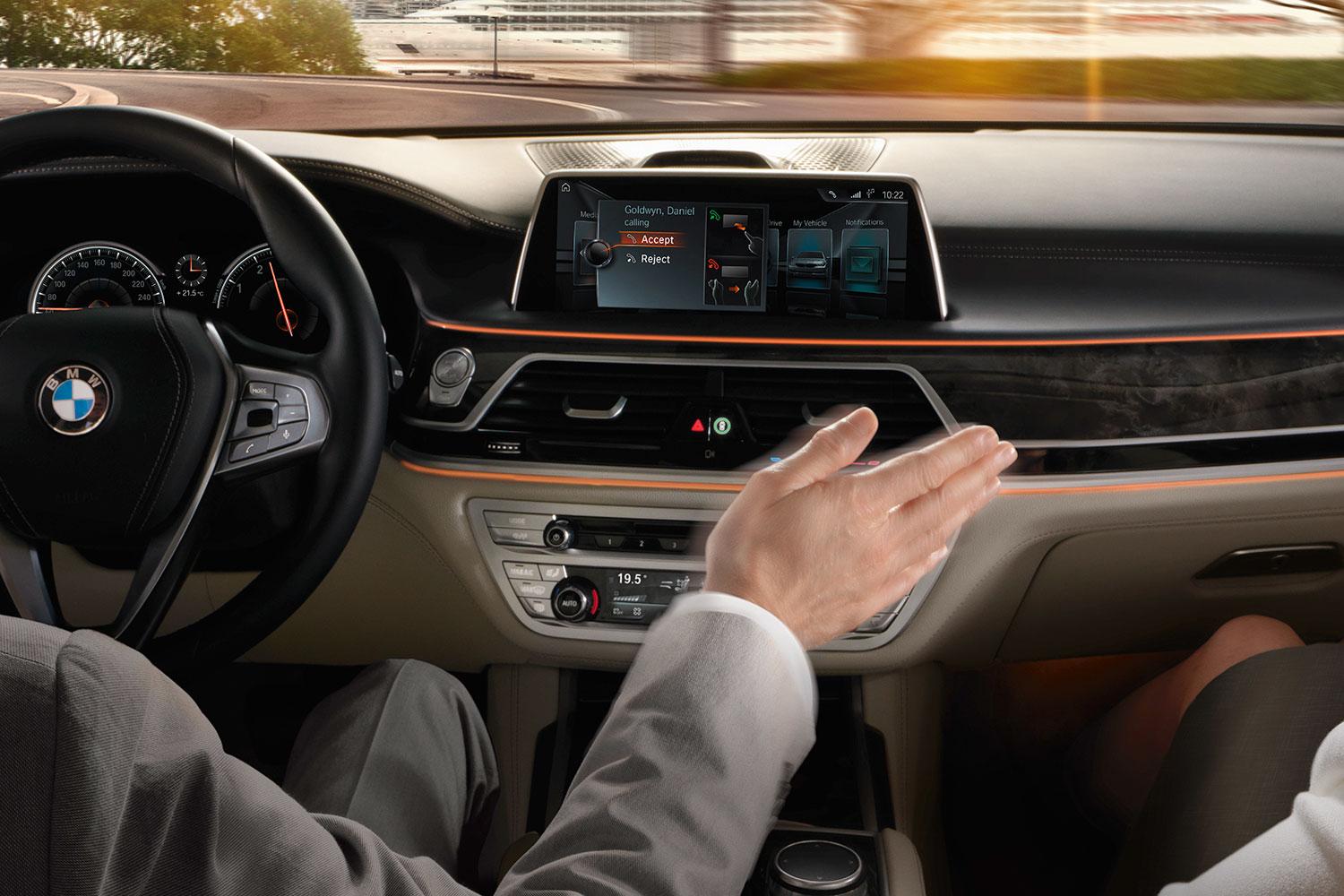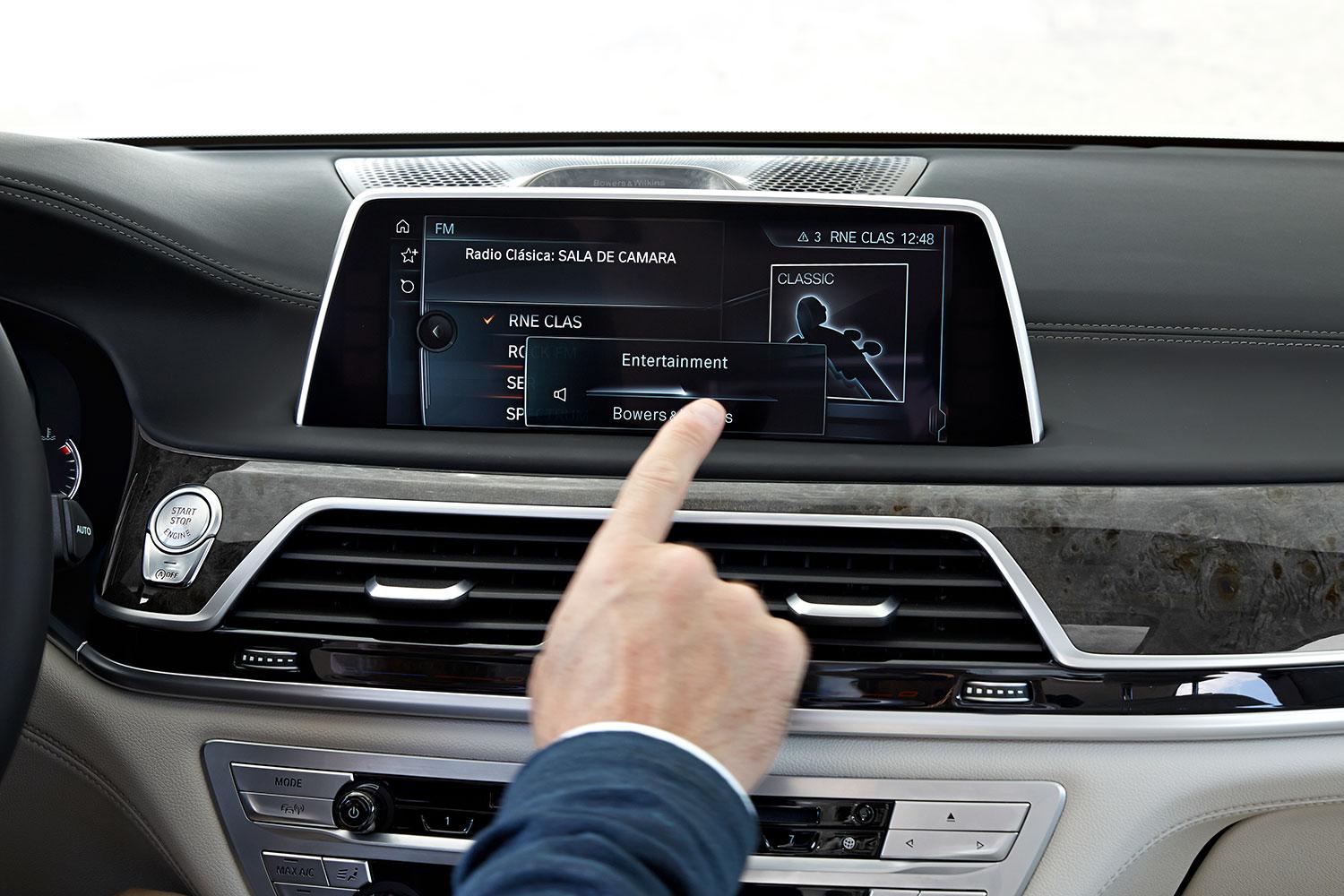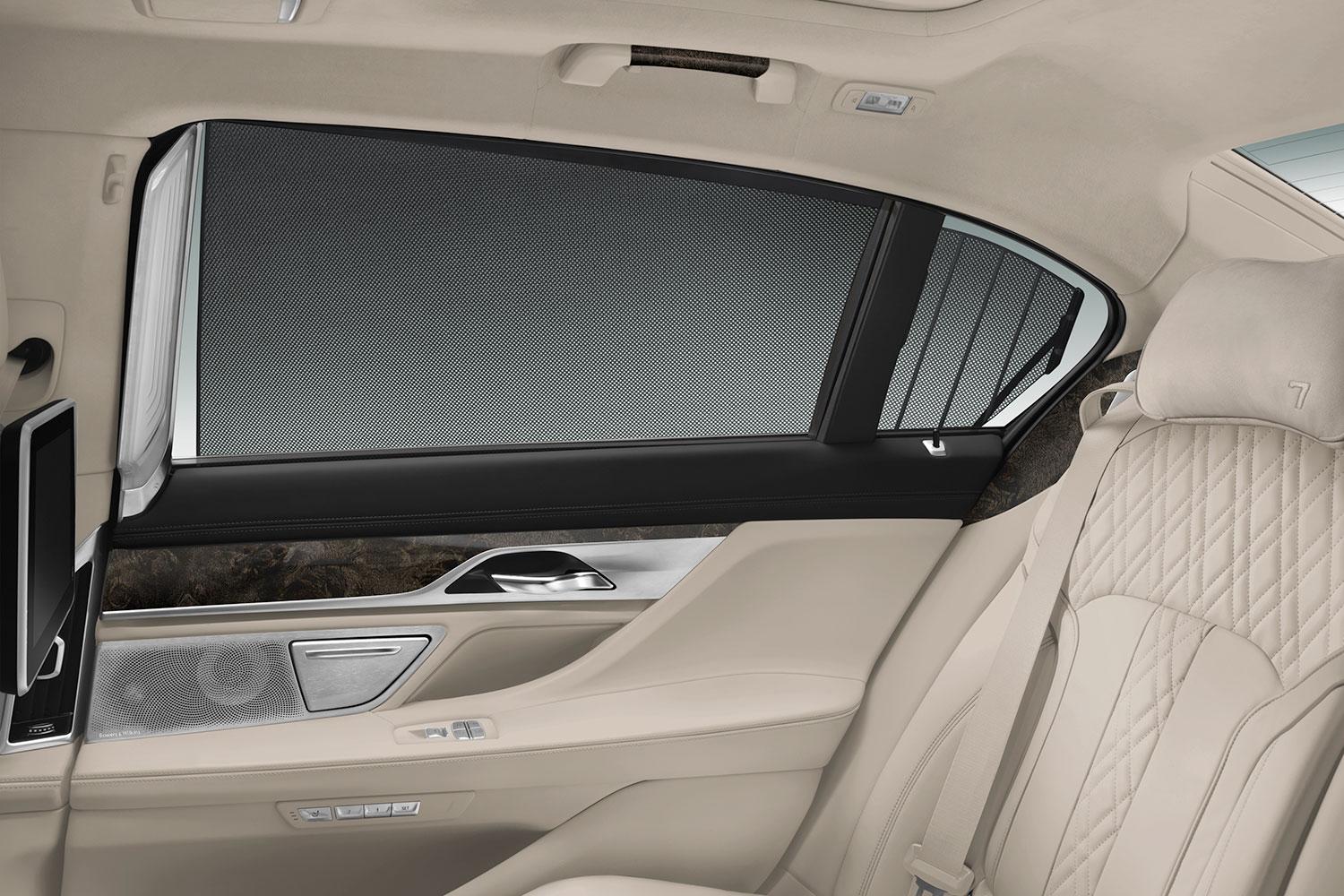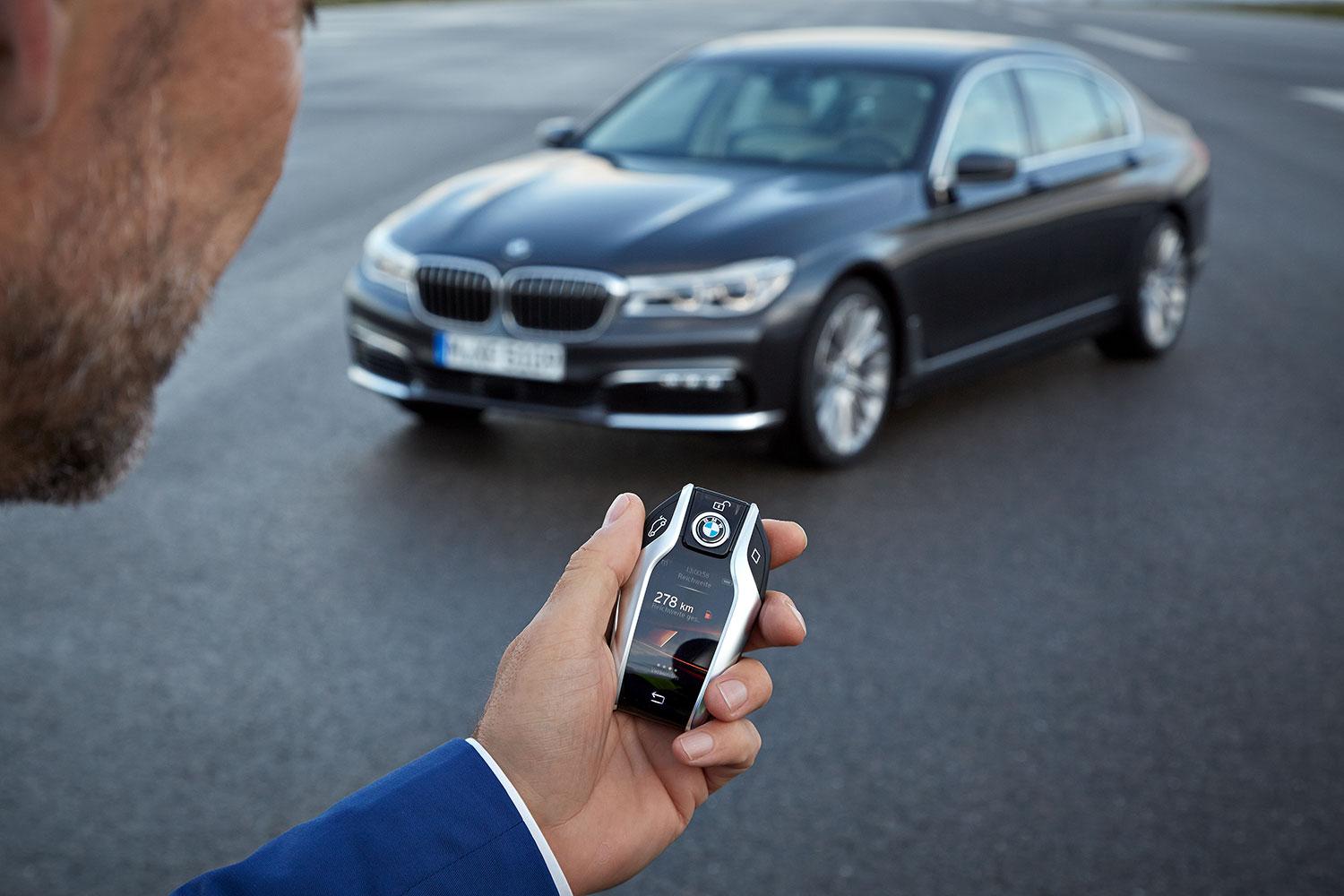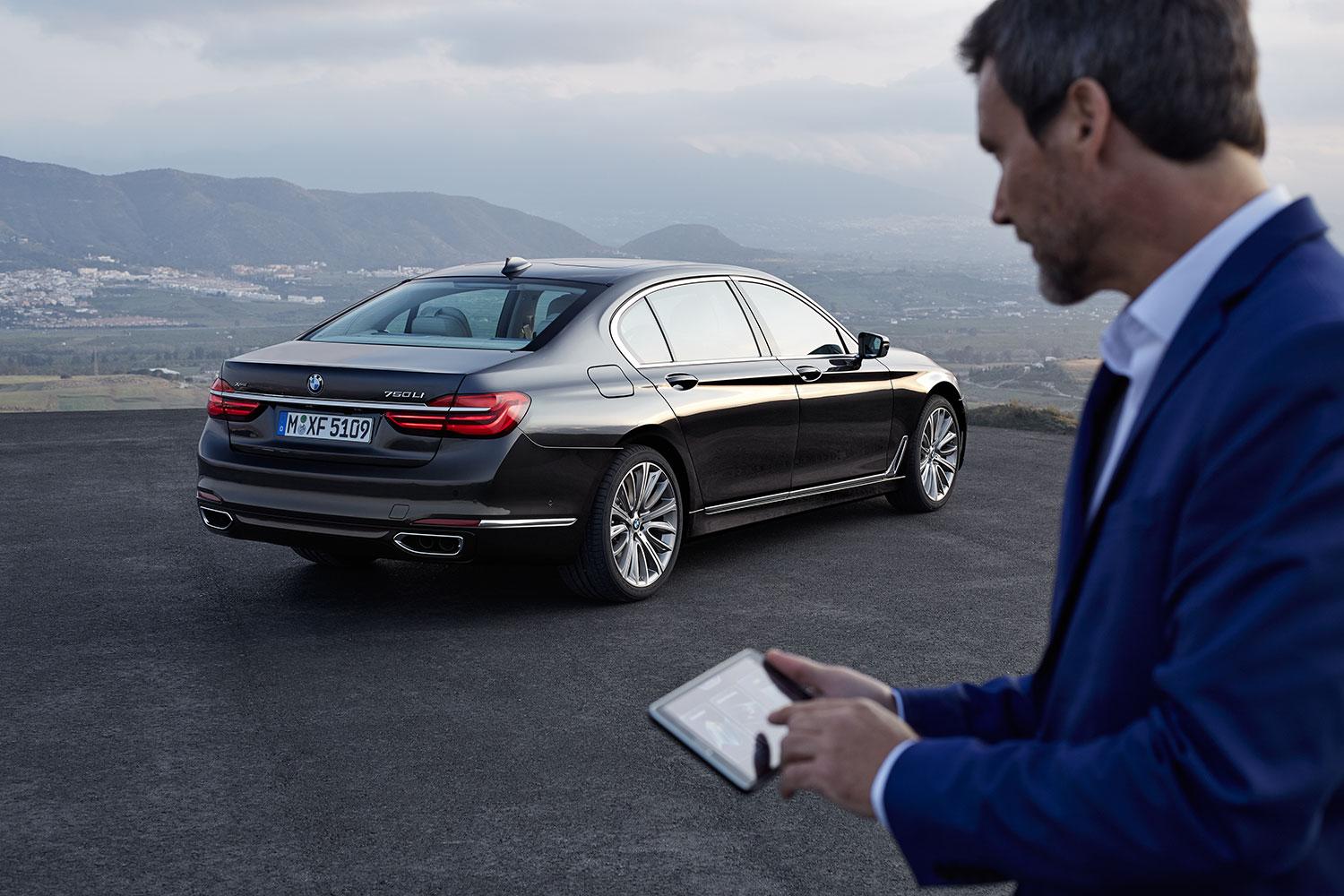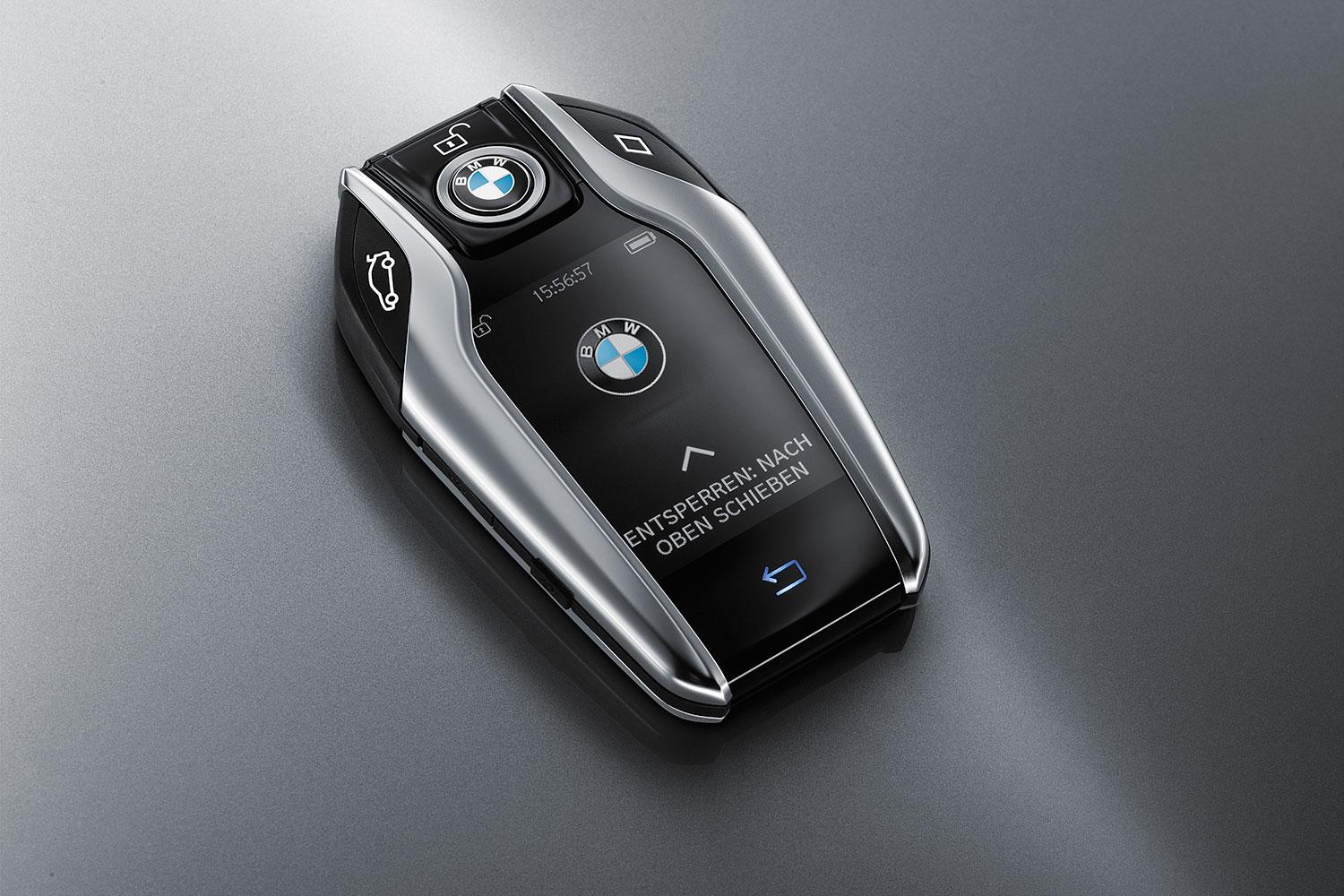Following several leaks and teaser images, BMW has officially unveiled the all-new 2016 7 Series. Now in its sixth generation, the Munich-based automaker’s long-awaited flagship sedan is more efficient, more advanced, and more luxurious than ever before.
Stretching 206.6 inches long, 74.9 inches wide, and 58.2 inches tall, the 7 is undeniably more of an evolution than a revolution when viewed from a distance. Its front end falls perfectly in line with BMW’s current design language thanks to elongated LED headlights that stretch into the kidney grille, a sculpted hood and a wide air dam that runs the entire width of the lower bumper. The 7 is the first BMW to feature an Active Kidney Grille with a visible air flap control.
When viewed from either side, the 7 is characterized by Air Breathers behind the front wheel arches that are designed to reduce turbulence in the wheel housings, thin strips of chrome trim above the rocker panels and, of course, BMW’s traditional Hofmeister Kink. Buyers in Europe have access to both short- and long-wheelbase versions of the 7, but the shorter model will not be offered on our shores.
The understated, elegant look continues out back with L-shaped LED tail lamps connected by a thin strip of chrome trim and two exhaust pipes integrated into the rear bumper. Six-cylinder models come standard with 18-inch alloy wheels, eight-cylinder models stand out thanks to 19-inch units and bling-focused buyers can order 21-inch alloys at an extra cost.
The evolutionary treatment is only skin-deep, and the 7 rides on a brand new modular platform that’s made out of lightweight materials such as carbon fiber-reinforced plastic, ultra-high-tensile steels and aluminum. Built using technology gleaned from BMW’s i sub-brand, the modular platform makes the 7 nearly 200 pounds lighter than the outgoing model, a diet that improves both fuel economy and handling, and gives it a perfect 50:50 weight distribution.
Life Aboard
Inside, the 7 features a driver-focused dashboard with a horizontal surface structure that gives the cockpit an extra sense of space, a three-spoke multi-function steering wheel and a configurable 12.3-inch digital instrument cluster. The interior can be spruced up by choosing one of five colors and either real wood or aluminum trim.
The 7 inaugurates BMW’s iDrive 5.0 infotainment system. The software can be controlled by using a touch screen, voice commands, a controller knob on the center console or BMW’s new gesture control technology. IDrive 5.0 will gradually trickle down to other members of the automaker’s lineup over the coming years.
No expense was spared in creating a luxurious ambiance, and the 7 packs heated armrests in the doors and the center console, a two-section panoramic sunroof, a WiFi hotspot, a touch-sensitive panel for the climate control and a wireless charging pad for mobile devices. Customers who don’t plan on driving themselves can order the Luxury Rear Seat Package, which coddles the rear occupants with massaging seats and a vitality program designed to revitalize the body on long trips.
The 7 comes standard with a self-leveling air suspension system that keeps the ride height at a constant level no matter how many occupants are on board. The driver can manually raise the suspension when driving over rough roads or approaching a steep driveway, and selecting Sport mode automatically lowers the ride height at high speeds.
Under the Hood
At launch, U.S. buyers will be asked to choose from two models called 740i and 750i xDrive, respectively. The 740i is powered by a new turbocharged 3.0-liter straight-six engine that was inaugurated by the 2016 340i. The six makes 320 horsepower between 5,200 rpm and 6,500 rpm and 330 foot-pounds of torque at just 1,380 rpm, enough grunt to send the 740i from zero to 60 mph in 5.4 seconds.
The 750i ups the ante with a turbocharged 4.4-liter V8 engine tuned to generate 445 horsepower between 5,500 and 6,000 rpm and a generous 480 foot-pounds of torque from 1,800 all the way to 4,500 rpm. With the V8, the 4,610-pound 7 Series can reach 60 mph from a stop in a sports car-like 4.3 seconds.
Both engines are bolted to an eight-speed automatic transmission with shift paddles and, surprisingly, a launch control function. The 740i comes standard with rear-wheel drive, while the 750i boasts BMW’s weather-beating xDrive all-wheel drive system.
A plug-in hybrid model called 740e xDrive will join the lineup next year. The 740e will be powered by a gasoline-electric drivetrain made up of a turbocharged 2.0-liter four-cylinder engine and a compact electric motor built into a hybrid-specific eight-speed automatic transmission. Linked to a lithium-ion battery pack, the motor will be able to power the 7 by itself for up to 23 miles at speeds of up to 75 mph.
After greeting the public for the first time at this September’s Frankfurt Motor Show, the 2016 BMW 7 Series is scheduled to land in U.S. showrooms in the fall of 2015. The 740i will carry a base price of $81,300, while the 750i xDrive will sticker for $97,400.












